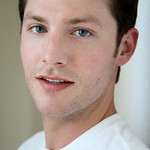Watch the dance video:
Then answer:
1. APA citation for video *
2. Jazz dance: Connection to the earth (e.g. dancing low w/bent knees, Upper body bent over at waist) *
Describe a section of the dance that displays this characteristic.
3. Jazz dance: Freedom of movement in the body (Pelvis, torso, and/or head move freely and react to movement.) *
Describe a section of the dance that displays this characteristic. (NOTE: This is a physical characteristic that you can see when looking at an individual dancer’s spine. It does not relate to emotional freedom or moving freely around a space.)
4. Jazz dance: Isolations (Individual body parts move independently from the rest of the body.) *
Describe a section of the dance that displays this characteristic.
5. Jazz dance: Syncopation (Movement emphasizes a beat other than the steady pulse of the music.) *
Describe a section of the dance that displays this characteristic.
6. Jazz dance: Call-and-response (Dance strongly reacts to and “displays” music dynamics and rhythms.) *
Describe a section of the dance that displays this characteristic.
Additional materials:
Jazz dance has:
1. A connection to the earth: In contrast to ballet, where the dancer “pulls up” and elevates, jazz dancers feel a pull from the ground, with moves in extended/consistent bent knee position or with upper body bending towards the ground. Movement is centered in a gravity of the pelvis, which gives jazz dance a sensual aesthetic.
2. Freedom of movement in the spine: Jazz movement makes use of the whole body and exhibits a freedom of movement in the spine that is very different from European dance styles, where the body is held upright, in a restrained posture. [Like the prim and proper Quadrille!] This is a physical, rather than sociological, characteristic. This characteristic shows a physical element that you can see, and it should not to be confused with “free-spirited” dancing or a performer’s feeling free to express himself. It is very specific to the whole body’s movement in dance, especially as that relates to a loose use of the spine. After centuries of rigid, proper, western European posture, African Americans brought upper body and pelvic movement to dance. The head, chest and pelvis respond freely to the movement of the rest of the body as opposed to remaining upright.
3. Isolations: Individual body parts move independently from others, e.g. shoulder rolls or isolated hip pulses. [Note: arms or legs moving are not generally considered isolations.]
4. Syncopated rhythms: Movement incorporates the unexpected emphasis of a beat that is not the steady pulse that keeps the tempo of the song. When you count music with the bass drum beat: “1, 2, 3, 4” an example of syncopation would be a surprise movement between those beats, e.g., “1, 2 & a 3, 4.”
5. Call-and-response: A variety of dynamics [explosive, powerful, percussive, subtle] is incorporated in movement that responds directly to those dynamics in the music. This characteristic speaks to a dancer’s showing the instruments DRAMATICALLY through movement. You can “see” specific notes and rhythms speaking through movement. In “call-and-response,” an individual note, phrase or section of music impacts the movement so strongly, that it looks as if the dancer is channeling the instrument, (e.g., a trumpet BWAP! corresponds to an electric ZAP! in the dancer’s body) OR calling back to it. This characteristic goes beyond matching dancing with music. Dancers from the beginning of time have, hopefully, danced along with the music, matching their steps to the beat and style of the music. “Call-and-response” goes beyond music framing the dancing. It is a dramatic response of the body that displays a dramatic musical impulse so strongly that the move wouldn’t really make sense without the music.
The five jazz dance characteristics are all physical characteristics that you can see, as opposed to something the dancer feels or a message the choreographer tries to convey. For example, “freedom of movement” is a body characteristic, not the feeling of freedom or freely moving around the stage.
Describe a section of the dance that displays this characteristic.
Struggling With a Similar Paper? Get Reliable Help Now.
Delivered on time. Plagiarism-free. Good Grades.
What is this?
It’s a homework service designed by a team of 23 writers based in Carlsbad, CA with one specific goal – to help students just like you complete their assignments on time and get good grades!
Why do you do it?
Because getting a degree is hard these days! With many students being forced to juggle between demanding careers, family life and a rigorous academic schedule. Having a helping hand from time to time goes a long way in making sure you get to the finish line with your sanity intact!
How does it work?
You have an assignment you need help with. Instead of struggling on this alone, you give us your assignment instructions, we select a team of 2 writers to work on your paper, after it’s done we send it to you via email.
What kind of writer will work on my paper?
Our support team will assign your paper to a team of 2 writers with a background in your degree – For example, if you have a nursing paper we will select a team with a nursing background. The main writer will handle the research and writing part while the second writer will proof the paper for grammar, formatting & referencing mistakes if any.
Our team is comprised of native English speakers working exclusively from the United States.
Will the paper be original?
Yes! It will be just as if you wrote the paper yourself! Completely original, written from your scratch following your specific instructions.
Is it free?
No, it’s a paid service. You pay for someone to work on your assignment for you.
Is it legit? Can I trust you?
Completely legit, backed by an iron-clad money back guarantee. We’ve been doing this since 2007 – helping students like you get through college.
Will you deliver it on time?
Absolutely! We understand you have a really tight deadline and you need this delivered a few hours before your deadline so you can look at it before turning it in.
Can you get me a good grade? It’s my final project and I need a good grade.
Yes! We only pick projects where we are sure we’ll deliver good grades.
What do you need to get started on my paper?
* The full assignment instructions as they appear on your school account.
* If a Grading Rubric is present, make sure to attach it.
* Include any special announcements or emails you might have gotten from your Professor pertaining to this assignment.
* Any templates or additional files required to complete the assignment.
How do I place an order?
You can do so through our custom order page here or you can talk to our live chat team and they’ll guide you on how to do this.
How will I receive my paper?
We will send it to your email. Please make sure to provide us with your best email – we’ll be using this to communicate to you throughout the whole process.
Getting Your Paper Today is as Simple as ABC
No more missed deadlines! No more late points deductions!
You give us your assignments instructions via email or through our order page.
Our support team selects a qualified writing team of 2 writers for you.
In under 5 minutes after you place your order, research & writing begins.
Complete paper is delivered to your email before your deadline is up.
Want A Good Grade?
Get a professional writer who has worked on a similar assignment to do this paper for you


